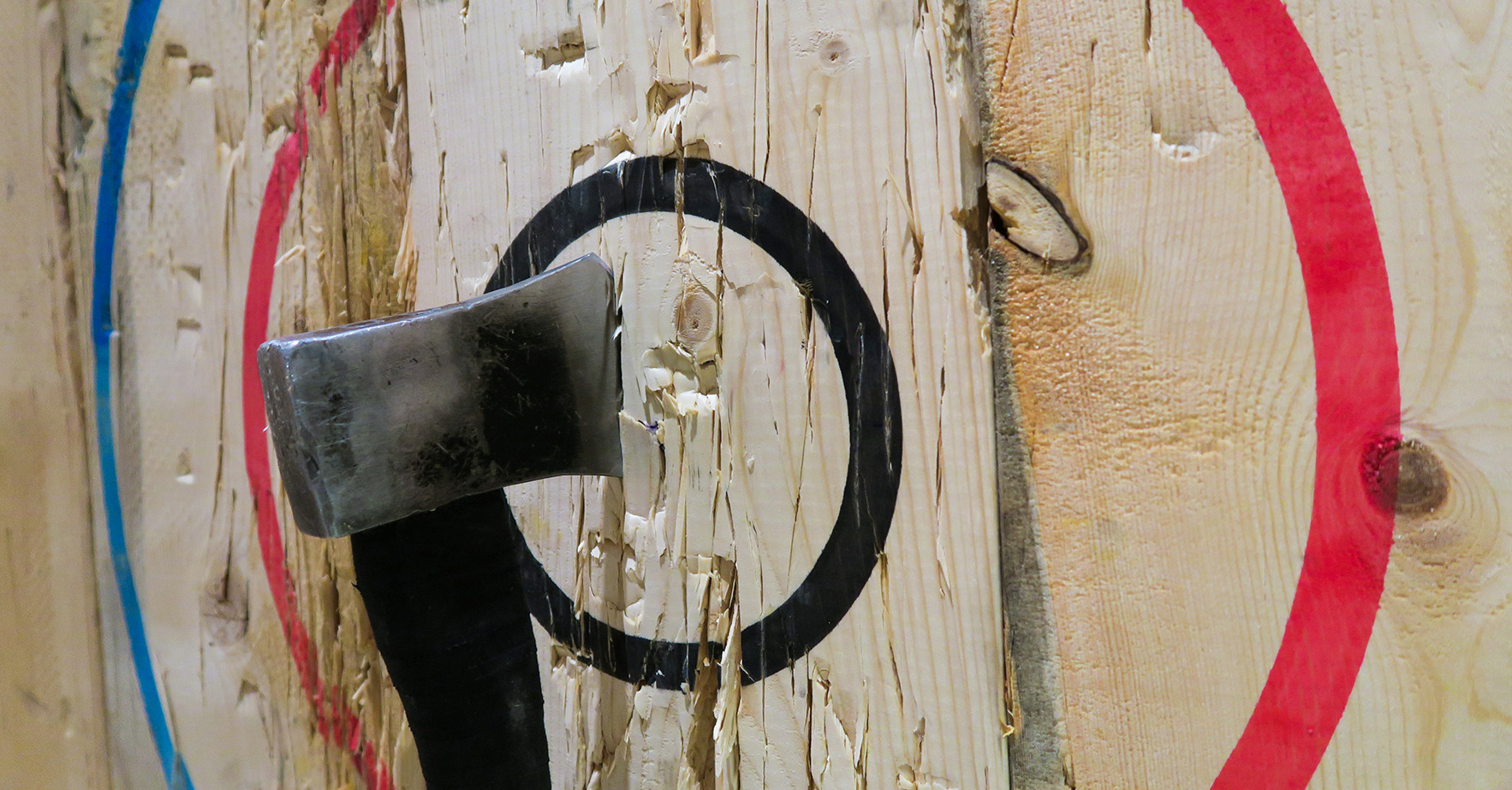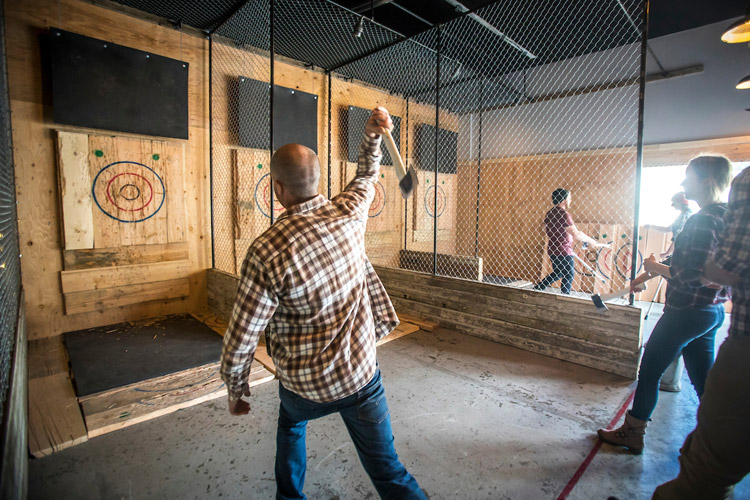Axe Throwing Denver: Experience the most effective of Indoor Entertainment
Axe Throwing Denver: Experience the most effective of Indoor Entertainment
Blog Article
The Enjoyable of Axe Throwing: Exactly How This Sporting Activity Incorporates Skill and Adrenaline for a Good Time
Axe throwing has become an astounding sporting activity that masterfully intertwines the requirement for specific ability with the thrill of adrenaline, offering individuals a appealing and unique experience. The act of tossing an axe in the direction of a target demands concentration and method, at the same time cultivating an atmosphere of sociability and pleasant competition. This appealing blend of mental emphasis and physical effort has made axe throwing a preferred selection for those seeking both recreation and a sense of success. To really value the deepness and appeal of this activity, one need to consider its beginnings, the required equipment, and the foundational methods that make sure both safety and security and enjoyment.
The Beginnings of Axe Throwing
Axe tossing, a recreational activity that has acquired considerable appeal in recent years, traces its roots back to ancient times. The earliest records of axe usage in competitive contexts are found among the Celts and Vikings, who tossed axes for sporting activity as well as in combat training.
Middle ages European warriors, specifically throughout the Center Ages, exercised axe tossing as part of their martial training. The Francisca, a type of tossing axe utilized by the Franks, became legendary for its harmful accuracy. This typical tool was developed to be tossed at adversary shields and armor, showcasing its dual utility in both sporting activity and fight.
In more recent background, axe tossing saw a resurgence in the logging camps of The United States and copyright in the 20th and 19th centuries. Lumberjacks would participate in friendly competition, examining their accuracy and toughness by targeting at wood targets. This advancement from a survival ability to an entertainment task has led the way for its modern revival, with committed places and leagues currently commemorating the sporting activity worldwide.
Equipment You Need
Understanding the abundant history of axe throwing improves the gratitude of the sport's contemporary iteration. Central to this thrilling task is the equipment, which is crucial for both safety and performance. The key tool is, certainly, the axe. For competitive and recreational axe tossing, the most typically utilized kind is the hatchet, generally weighing in between 1.25 to 2 pounds with a deal with length of about 16 inches. The axe ought to have a sharp, well-maintained blade and a manage made from sturdy wood or composite material, making certain a good grasp and balance.
Similarly important is the target. Law targets are built from wood, with softwood varieties like want or cottonwood being liked for their ability to soak up and hold the axe. The target is usually separated right into five concentric circles, each with a certain factor value, to assist in rating.
Security gear, though frequently neglected, is vital. Protective gloves can improve grasp and protect against blisters, while closed-toed footwear are a must to safeguard feet from gone down axes (axe throwing denver colorado). A well-lit, spacious tossing location, complete with safety and security barriers, ensures a regulated setting where individuals can focus on sharpening their skills.
Standard Techniques Clarified
Understanding the fundamental techniques of axe throwing is necessary for both safety and security and effectiveness. The dominant hand should be positioned straight listed below the axe head, while the non-dominant hand sustains the end of the manage.
Your dominant foot needs next page to be slightly forward, aligning with your target. This positioning help in keeping security and directing power properly towards the target.

Safety First
Ensuring safety in axe throwing is extremely important to creating an injury-free and enjoyable experience. Safety measures begin with the location layout. A properly designed axe throwing facility features clear separations between throwing lanes, durable backgrounds to catch stray axes, and non-slip flooring to avoid crashes. Furthermore, sufficient illumination is crucial to assist participants maintain visual precision and spatial understanding.
Advantages of Axe Throwing
Axe throwing offers a myriad of advantages that prolong past straightforward recreation. Physically, it gives a full-body exercise, involving muscular tissues in the arms, shoulders, back, and core. The repeated movement of tossing the axe likewise boosts hand-eye coordination and great electric motor abilities. For those looking this link to improve their total health and fitness, axe throwing can function as a interesting and vibrant type of workout.
Emotionally, axe throwing calls for emphasis, method, and precision, making it an outstanding way to sharpen cognitive skills. The focus required to strike the target can act as a kind of mindfulness, allowing individuals to remove their minds and decrease tension. This psychological interaction can be especially helpful in assisting individuals establish much better analytic abilities and mental durability.
Socially, axe throwing is frequently enjoyed in group settings, fostering team-building and camaraderie. Whether as component of a corporate event or a laid-back outing with friends, the sport motivates communication and partnership. In addition, the public experience of learning and improving together can enhance relationships and create enduring memories.
Final Thought

The earliest records of axe usage in affordable contexts are located among the Celts and Vikings, that threw axes for sporting activity as well as in fight training. Launch the axe when your hands are around at eye degree, permitting the axe's natural turning to assist it towards the target.
A properly designed axe throwing facility functions clear separations in between tossing lanes, sturdy backdrops to catch stray axes, and non-slip flooring to avoid accidents. Individuals should be instructed on the correct way to manage and toss the axe, emphasizing regulated, purposeful activities over forceful tosses.
In recap, axe throwing stands out as a sport that masterfully integrates adrenaline, skill, and precision.
Report this page